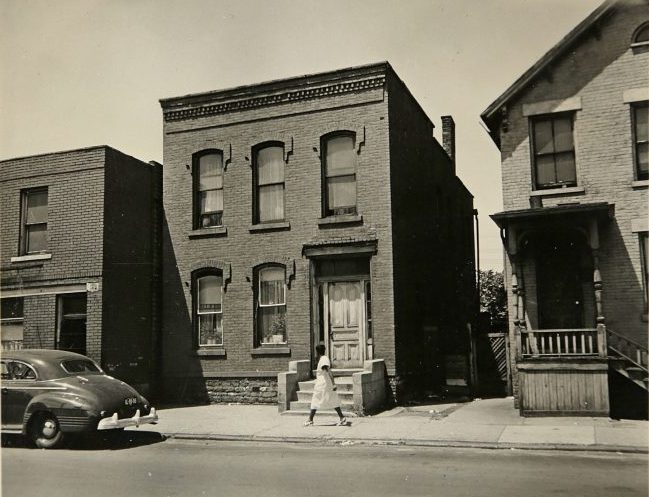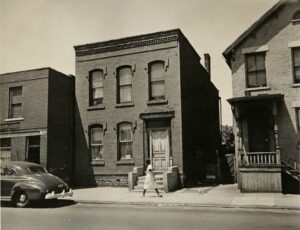
In this historical photo, a woman walks along Lafayette St. on July 22, 1949 in Black Bottom before it was torn down in the 1950s. Black Bottom was home to many of Detroit’s African Americans. (Burton Collection)

In this historical photo, a woman walks along Lafayette St. on July 22, 1949 in Black Bottom before it was torn down in the 1950s. Black Bottom was home to many of Detroit’s African Americans. (Burton Collection)
Five projects will receive funding in the latest round of Pressing Matters grants, a research incentive funding program that supports research advancing the state of practice in Taubman College’s various disciplines and forges new interdisciplinary opportunities. Aligning with its title, the Pressing Matters grant aims to spotlight projects in the college that address societal priorities and provide practical solutions.
The funded research is relevant to Taubman College disciplines and the University of Michigan’s “big-picture” multidisciplinary themes. Recipients of the grant have demonstrated active collaboration between fields in the college, with another U-M unit, or with an external partner, proving that their work would empower constituencies to improve their quality of life.
“The selected projects address some of the most imperative concerns facing our disciplines,” said Dean Jonathan Massey. “Taubman College faculty are collaborating to expand access to affordable housing, preserve history while looking toward a more equitable future, make homes in low-income areas more efficient and comfortable, broaden the accessibility and effectiveness of online learning, and develop climate-friendly alternatives to common building materials. These projects will help our faculty and students continue to work on the leading edge in these fundamental areas of research.”
The projects include:
Reconstructing Black Bottom
Reconstructing Black Bottom in the Virtual Urban Imaginary is a collaborative research, architectural reconstruction, and oral history project to acknowledge and learn about the loss of a thriving Afro-American neighborhood while navigating the spaces of urban renewal in the city of Detroit. The project will specifically examine the neighborhoods demolished as so-called “slums” for the construction of two contemporary urban renewal areas: Lafayette Park, built in 1956, and the I-375 Chrysler Freeway in 1961. Based on Sanborn maps from 1951 of every building demolished, U.S. census records from 1950 of up to 40,000 displaced people, Polk City Directories from 1953 of every business evicted, and 1950s urban renewal survey photographs from demolition crews, we will construct a public-facing interactive map and a Virtual Reality immersion of Black Bottom. The results will use architecture and planning visualization tools to synthesize the four sources in a new digital medium that will empower Detroit residents (and the broader public) to engage and understand their lost community.
U-M Research Team:
- Ana Morcillo Pallarés, assistant professor of architecture
- Myles Zhang, Ph.D. student in architecture
- Jonathan Rule, assistant professor of practice in architecture
- Robert Fishman, professor emeritus of architecture
Partners:
- Earl Lewis, professor of history, Afro-American and African studies
- Maya Sudarkasa, Ph.D. student in history
- Daniel Jin, Ph.D. student in American culture
- Rita Chin, associate dean of social sciences at Rackham Graduate School
- Christine Hwang, Ph.D. candidate in planning
- Detroit residents and Lafayette Park residents
For other grant information, read the full story here.

